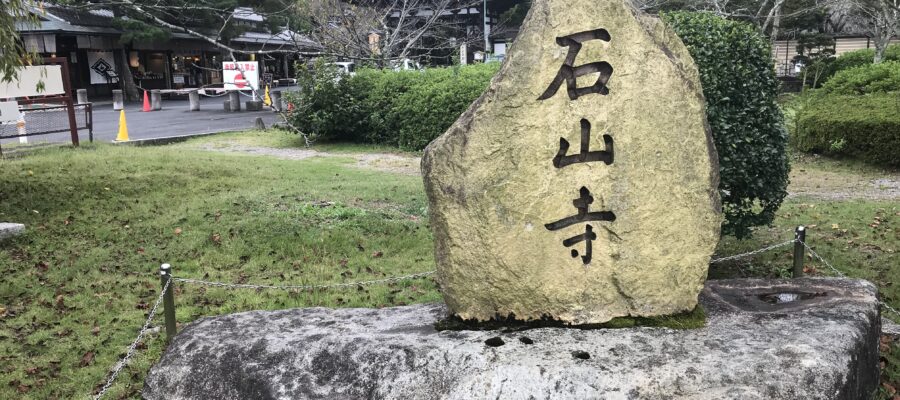立派な仁王像がお出迎え
琵琶湖から流れる瀬田川沿いをバスで進むと西国巡礼13番の札所、石光山 石山寺(東寺真言宗大本山)に到着。予備知識なしで来ましたが、外観からも立派な由緒あるお寺の雰囲気が伝わってきます。
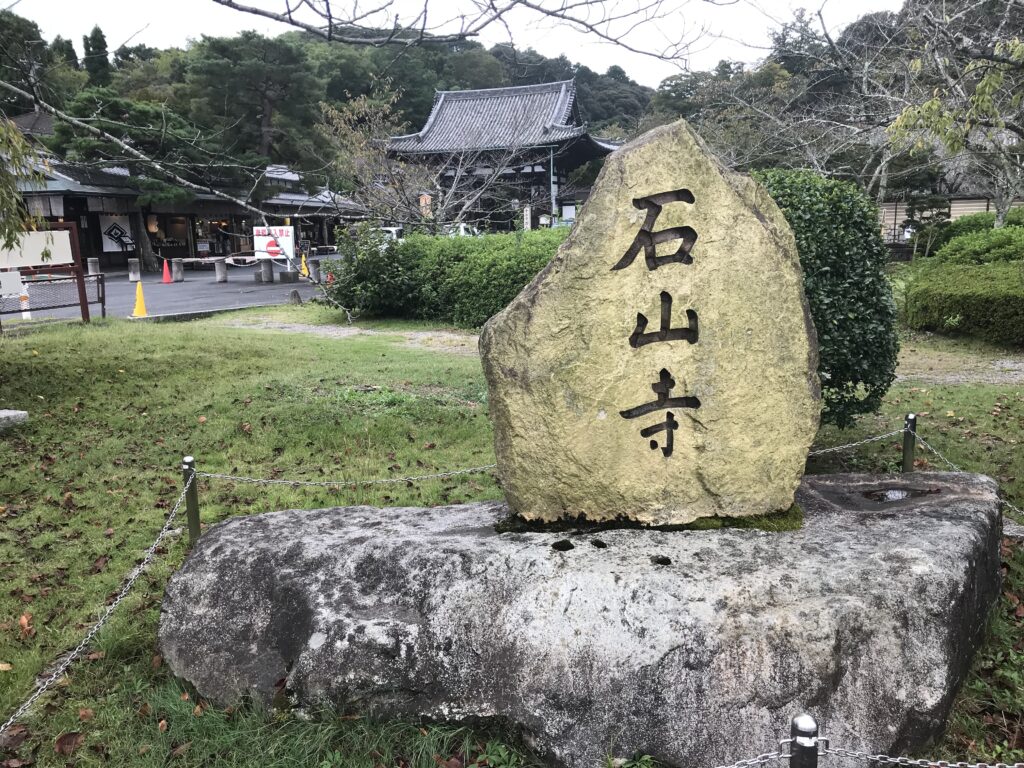
東大門では立派な仁王像が出迎えてくれます。黒光りしているような木肌から、今にも動き出しそうな圧倒的な躍動感で迫ってきます。東大寺の南大門の阿形・吽形には大きさこそかなわないものの、非常に感銘を受けました。
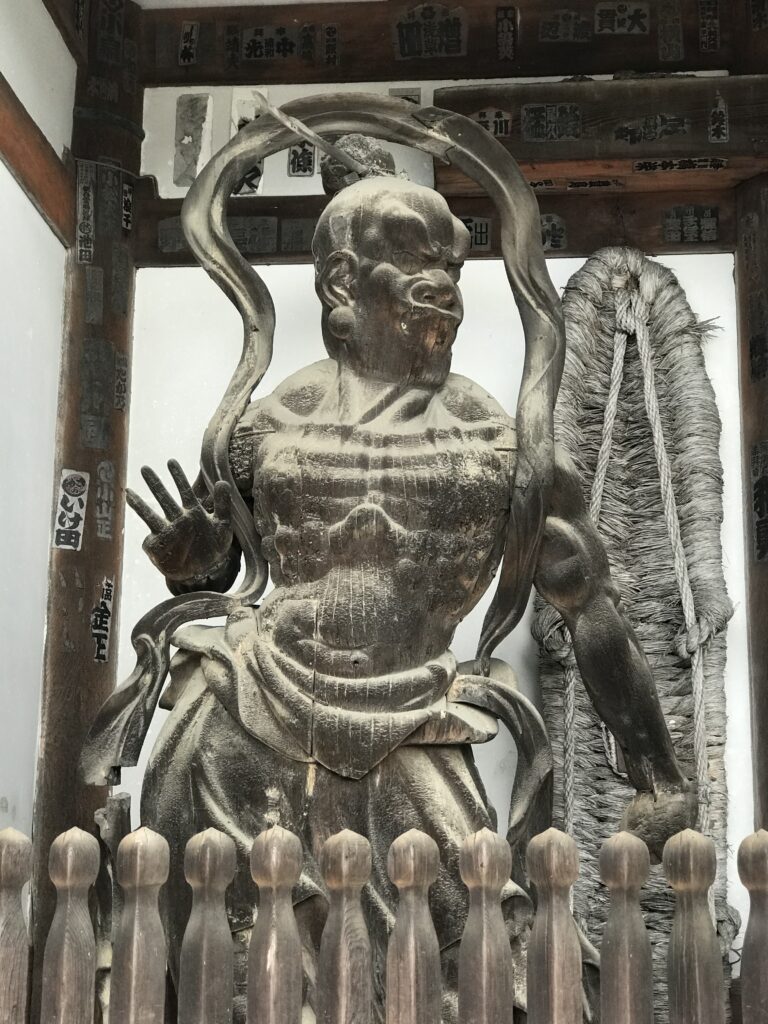
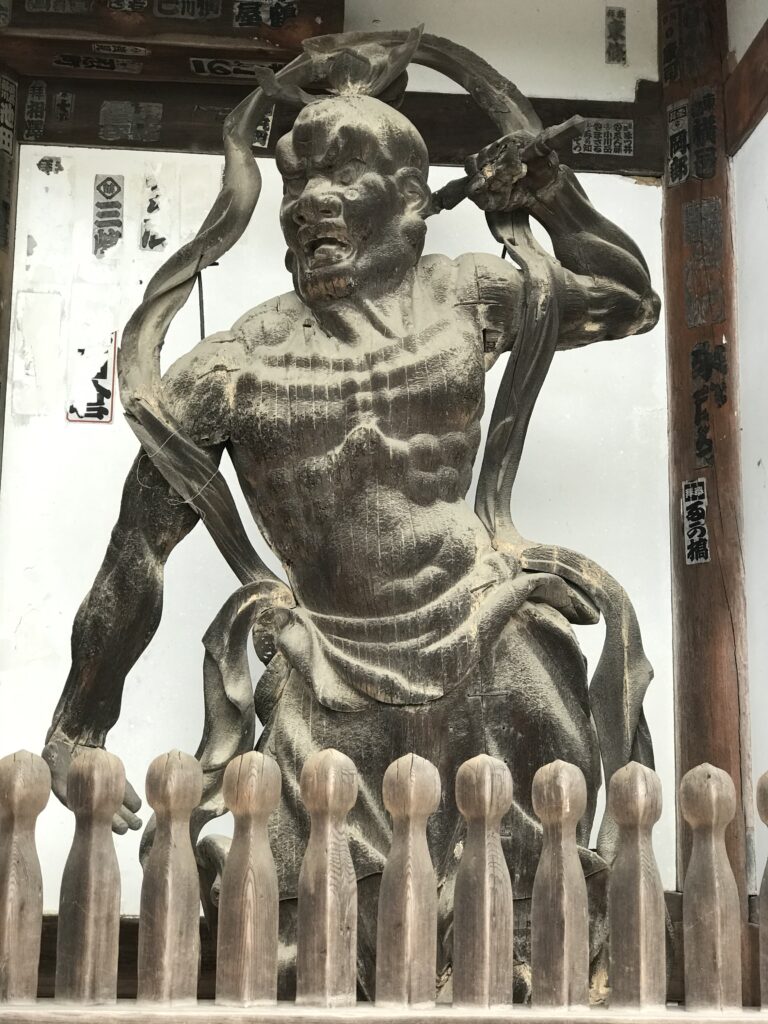
くぐり岩をくぐる
長い参道を歩いていきますと、本堂に向かう階段の手前、池の奥に「くぐり岩」という自然の大理石に空いた空洞があります。体内くぐりに見立て、参拝前にここをくぐって身を清めるようです。私もくぐりましたが、中でつまずいてしまい、スーツの裾を汚してしまいました。
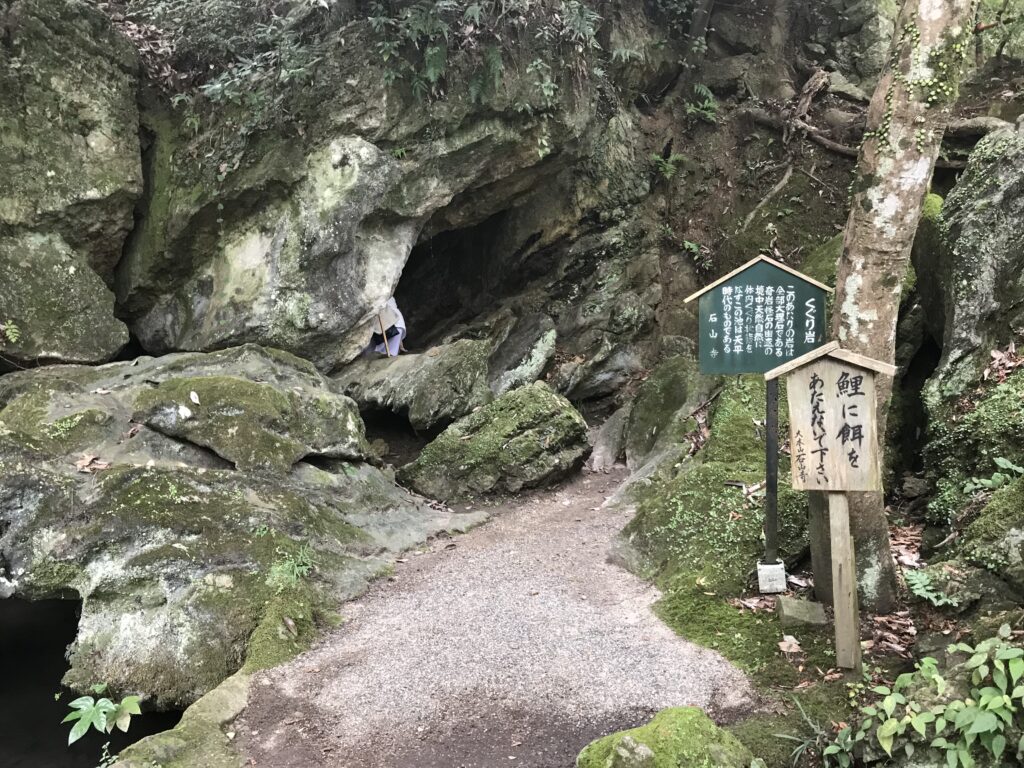
紫式部がここで源氏物語を書いた
紫式部が源氏物語を書いたところと伝えられる本堂でお参りを済ませ、多宝塔や月見亭をめぐりながら境内を一周します。途中、豊浄殿で紫式部ゆかりの宝物を見たり、紫式部像のところで一休みしたり、平安時代に思いを馳せることができました。
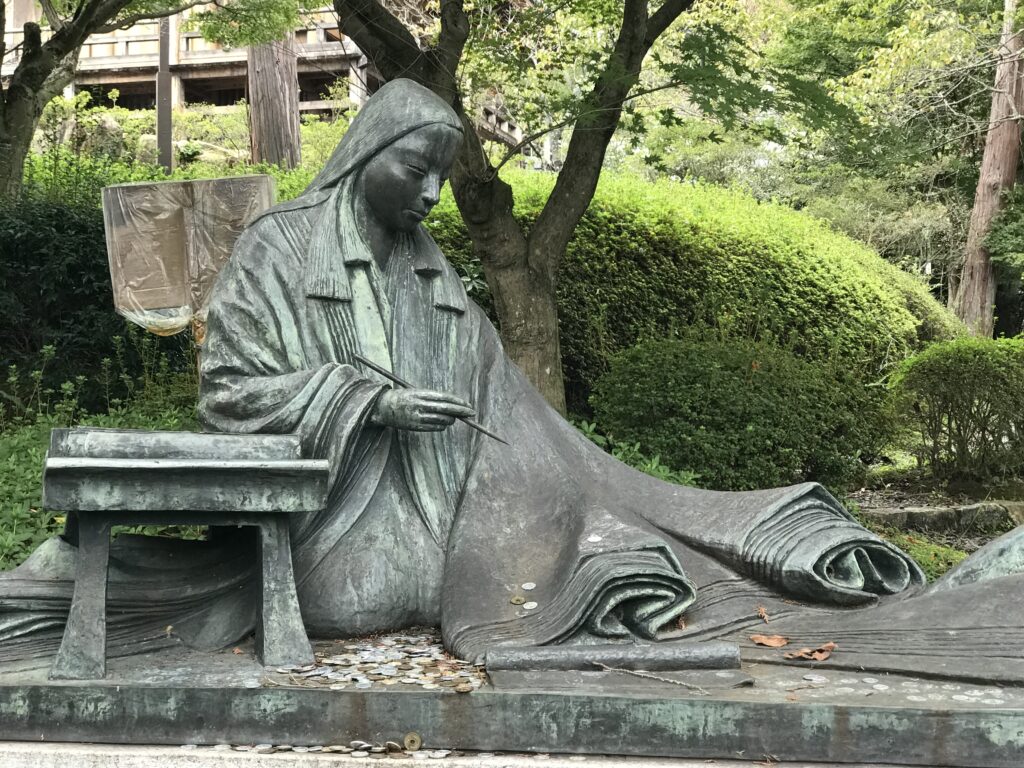
後日、源氏物語は一部しか読んだことがないので、妻にまんがの「あさきゆめみし」を貸してもらいましたが、字が小さくて読み進められませんでした。いずれ、現代語訳にでも再挑戦したいと思います。(完)
石山寺の御朱印
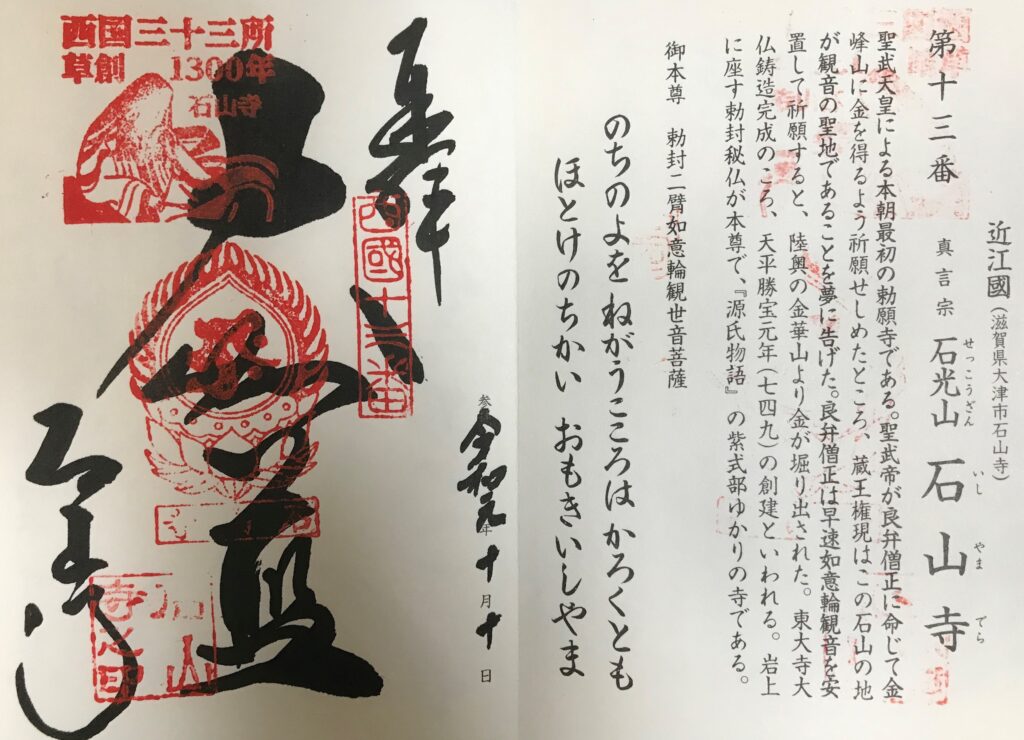
石山寺が紹介されている書籍
神仏霊場会の公式ガイドブックに石山寺が紹介されています。
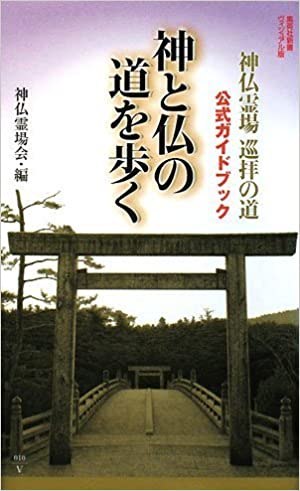
神と仏の道を歩く 神仏霊場巡拝の道公式ガイドブック (集英社新書ヴィジュアル版) [ 神仏霊場会 ]
価格:1,466円
(2021/5/6 09:24時点)
感想(5件)
Ishiyama Dera Temple (English)
Splendid statues of Nio welcome you.
After taking a bus along the Seta River flowing from Lake Biwa, I arrived at the 13th temple of the Saigoku Pilgrimage, Ishiyama Dera Temple (Toji Shingon Shu Daihonzan). I came here without any prior knowledge, but even from the outside, I could feel the atmosphere of a splendid and historic temple.
Magnificent statues of Niou greet you at Todai-mon Gate. The shiny black surface of the wood gives the statue an overwhelming sense of dynamism, as if they are about to move. Although they are not as large as the statues of A-Un and A-Un at the Nandaimon Gate of Todaiji Temple, I was very impressed.
Passing through “Kuguri” rock
As I walked along the long approach to the temple, I saw a hollow in the natural marble called “Kuguri Iwa Rock” at the back of the pond, just before the stairs to the main hall. This hollow space is used as a place to purify oneself before visiting the temple. I went through it myself, but I tripped inside and soiled the hem of my suit.
It was here that Murasaki Shikibu wrote The Tale of Genji.
After paying my respect at the main hall, which is said to be the place where Murasaki Shikibu wrote the Tale of Genji, I walked around the temple grounds, visiting the multi-storied pagoda and the Tsukimitei (Moon Viewing) Pavilion. On the way, I saw treasures related to Murasaki Shikibu at Hojo-den and took a break at the Murasaki Shikibu statue, which reminded me of the elegance of the Heian period.
Later, since I have only read part of The Tale of Genji, I asked my wife to lend me a copy of the manga “Asaki Yumeishi,” but the characters were too small for me to read through. I would like to try again to read the tale of Genji which is translated into modern Japanese language.
Temple Ishiyama Dera (Français)
Deux splendides statues de Nio vous accueillent.
Après avoir pris un bus le long de la rivière Seta qui coule du lac Biwa, je suis arrivé au 13e temple du pèlerinage de Saigoku, le temple Ishiyama Dera (Toji Shingon Shu Daihonzan). Je suis venu ici sans aucune connaissance préalable, mais même de l’extérieur, je pouvais sentir l’atmosphère d’un temple splendide et historique.
De magnifiques statues de Niou vous accueillent à la porte Todai-mon. La surface noire et brillante du bois donne à la statue une impression de dynamisme, comme si elle était sur le point de bouger. Bien qu’elles ne soient pas aussi grandes que les statues de A-Un et A-Un à la porte Nandaimon du temple Todaiji, j’ai été très impressionné.
Passage par le rocher “Kuguri
En marchant le long de la longue approche du temple, j’ai vu un creux dans le marbre naturel appelé “Kuguri Iwa Rock” à l’arrière du bassin, juste avant les escaliers menant à la salle principale. Ce creux est utilisé comme un endroit pour se purifier avant de visiter le temple. Je l’ai moi-même traversé, mais j’ai trébuché à l’intérieur et j’ai souillé l’ourlet de mon costume.
C’est ici que Murasaki Shikibu a écrit Le conte de Genji.
Après avoir rendu hommage au hall principal, qui est censé être le lieu où Murasaki Shikibu a écrit le Conte de Genji, j’ai fait le tour du temple, en visitant la pagode à plusieurs étages et le pavillon Tsukimitei (observation de la lune). En chemin, j’ai vu des trésors liés à Murasaki Shikibu à Hojo-den et fait une pause à la statue de Murasaki Shikibu, qui m’a rappelé l’élégance de la période Heian.
Plus tard, comme je n’ai lu qu’une partie du Conte de Genji, j’ai demandé à ma femme de me prêter un exemplaire du manga “Asaki Yumeishi”, mais les caractères étaient trop petits pour que je puisse les lire. J’aimerais réessayer de lire le conte de Genji qui est traduit en langue japonaise moderne.
